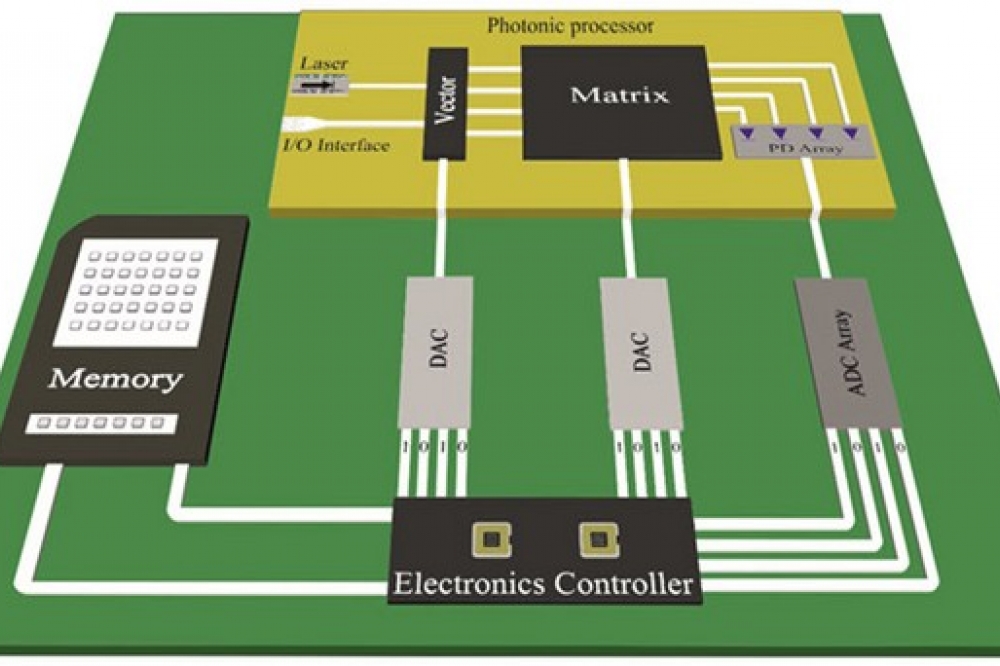Matrix multiplications at the speed of light

Researchers use SiGe computing engine with AI to identify data centre DDoS attacks
A team of photonic researchers from the Aristotle University of Thessaloniki have harnessed the power of light to develop a SiGe photonic compute engine capable of computing tiled matrix multiplication (TMM) at a record-high 50 GHz clock frequency.
Multiplication between matrices is one of the most time - and energy- demanding operations of AI computational systems. Tiled matrix multiplication (TMM) helps to speed this computation by decomposing matrix operations into smaller tiles to be computed by the same system in consecutive time slots.
As reported in Advanced Photonics, the team, led Nikos Pleros, have used SiGe electro-absorption modulators and a novel neuromorphic architectural design capable of encoding and computing data. The work promises to contribute significantly to data centre cybersecurity.
Working with NVIDIA’s experts in the field of data centre cybersecurity, the researchers have successfully merged this photonic solution with AI to establish a framework to identify successfully and swiftly one of the most common types of data centre attacks, namely distributed denial‑of‑service (DDoS) attacks, in NVIDIA’s servers at line‑rates.
Reference
'Neuromorphic silicon photonics with 50 GHz tiled matrix multiplication for deep learning applications' by Giamougiannis et al; Adv. Photon. 5(1) 016004 (2023)



































